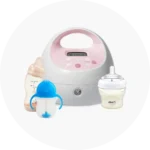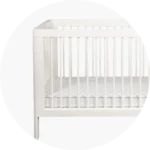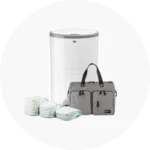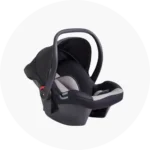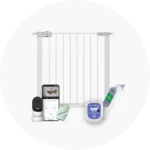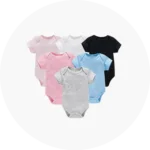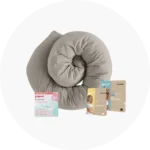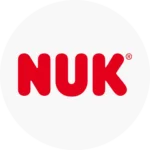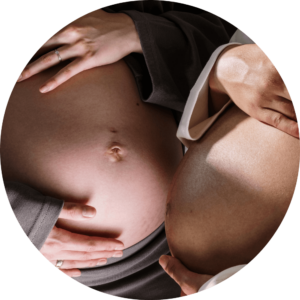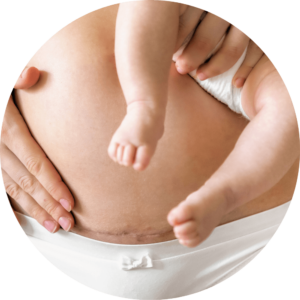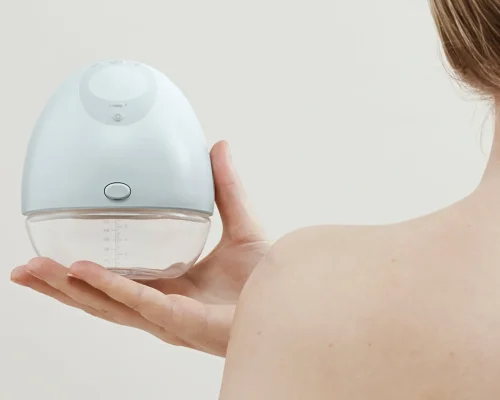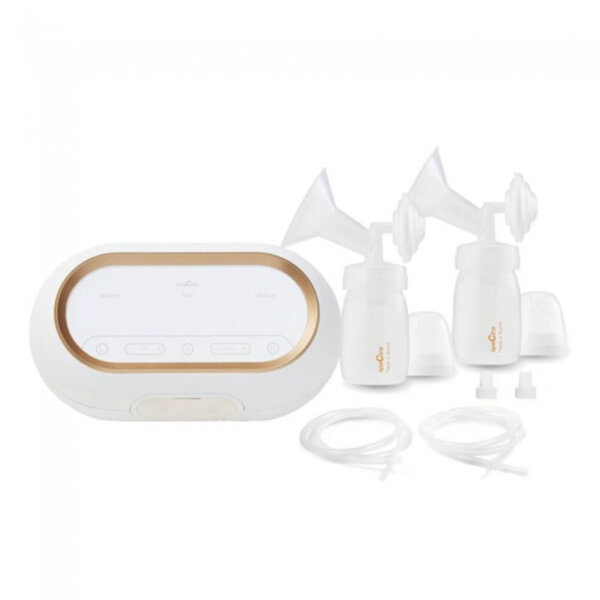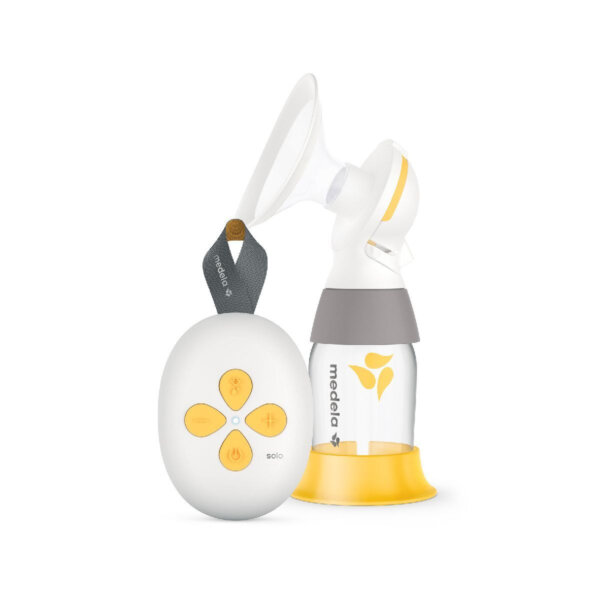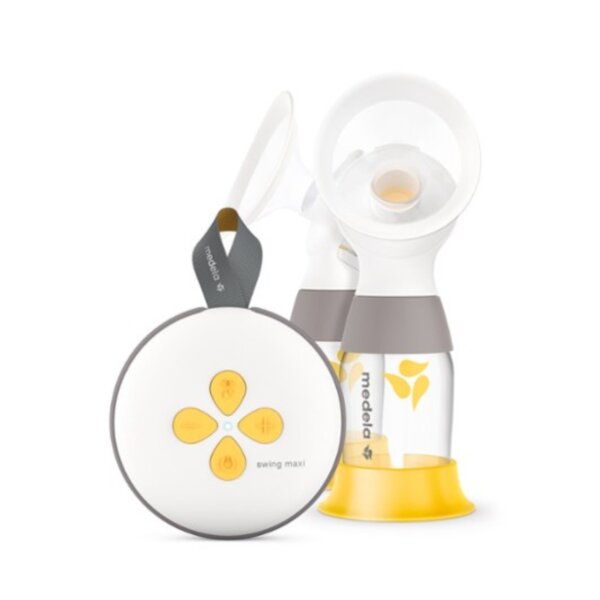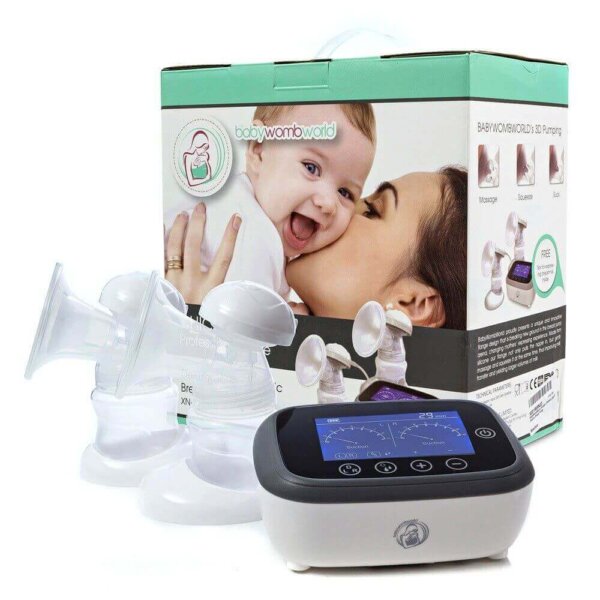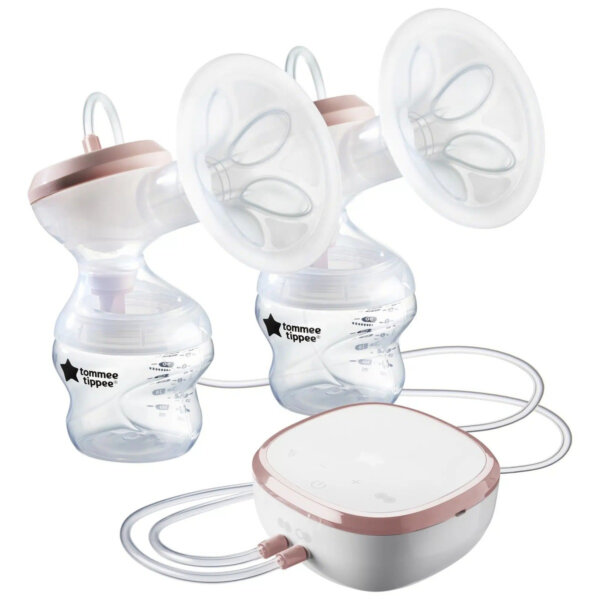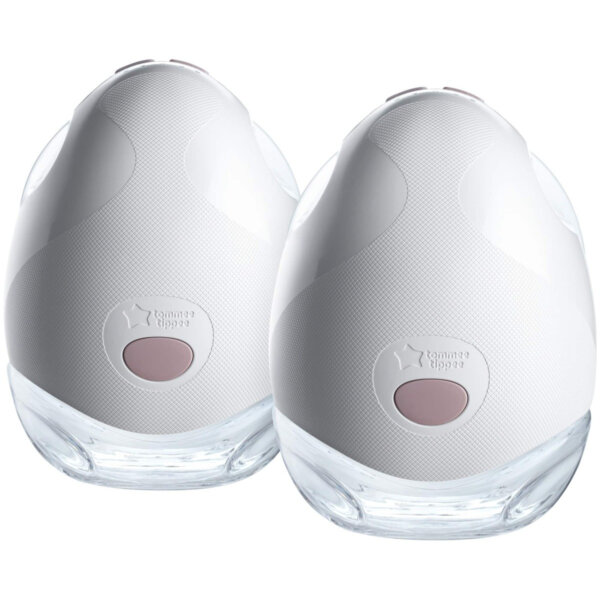Everything You Need to Know About Breast Pumps
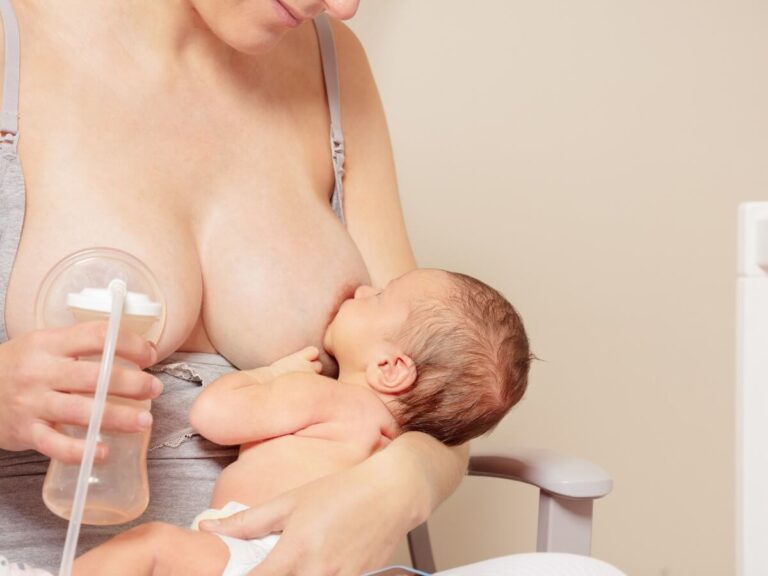
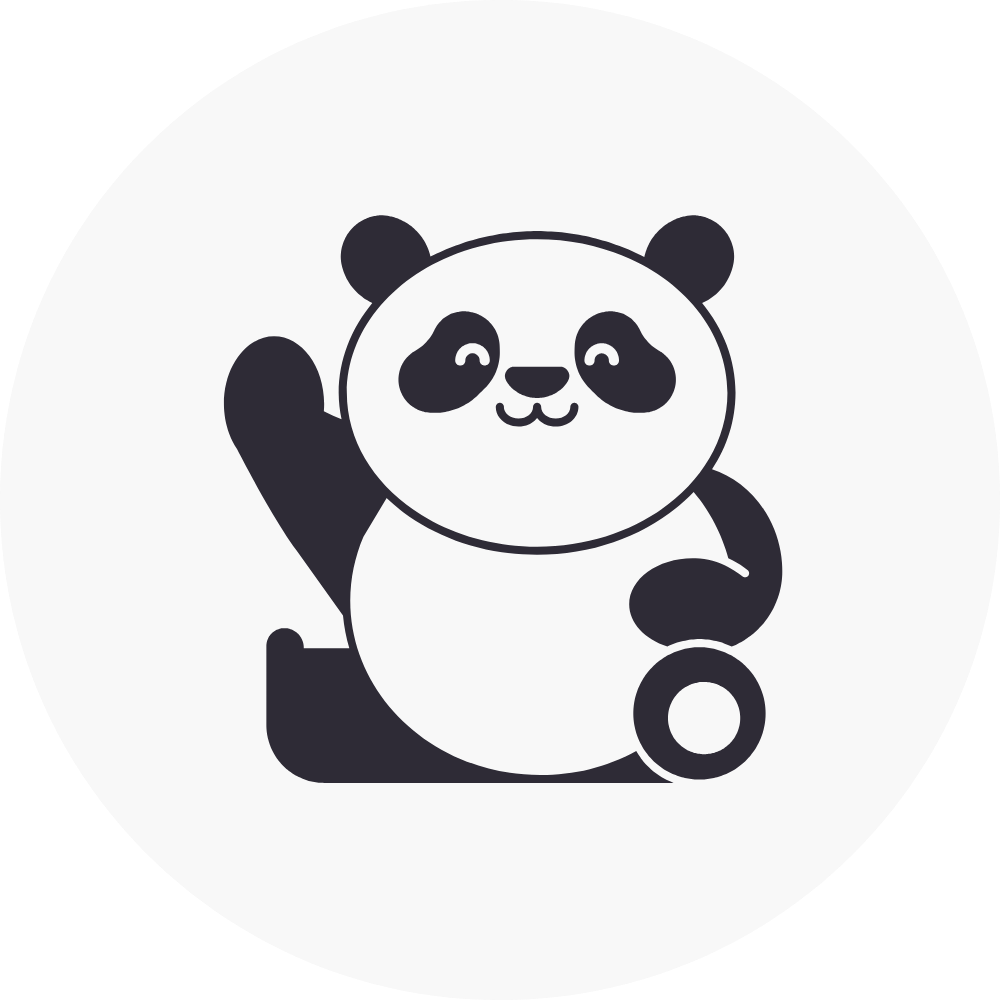
Table of Contents
What Is A Breast Pump
A breast pump is a device that mimics your baby’s natural sucking rhythm, allowing you to express milk to collect for whenever you need it. It’s a tool that allows you to give your baby breast milk at times when you may not be able to breastfeed.
A breast pump is an investment. There’s no fixed timeline on how long you’ll use or need your pump. Some strong pumps can last through multiple pregnancies. Just take care of it and refresh the parts as needed!
When to Buy a Breast Pump?
Breast pumps can be used for as long as you want to feed your baby breastmilk. You can use it from birth, and some women find that breast pumps help to establish milk supply in the first few day if their baby cannot breastfeed directly. While it’s not necessary to get a pump before the baby comes, we do recommend it in case you’re separated from them at the hospital (for example, if your little one is taken to the NICU) or just so there’s one less thing to worry about post-birth.
If you need a breast pump urgently, contact us and we will do our absolute best to help you!
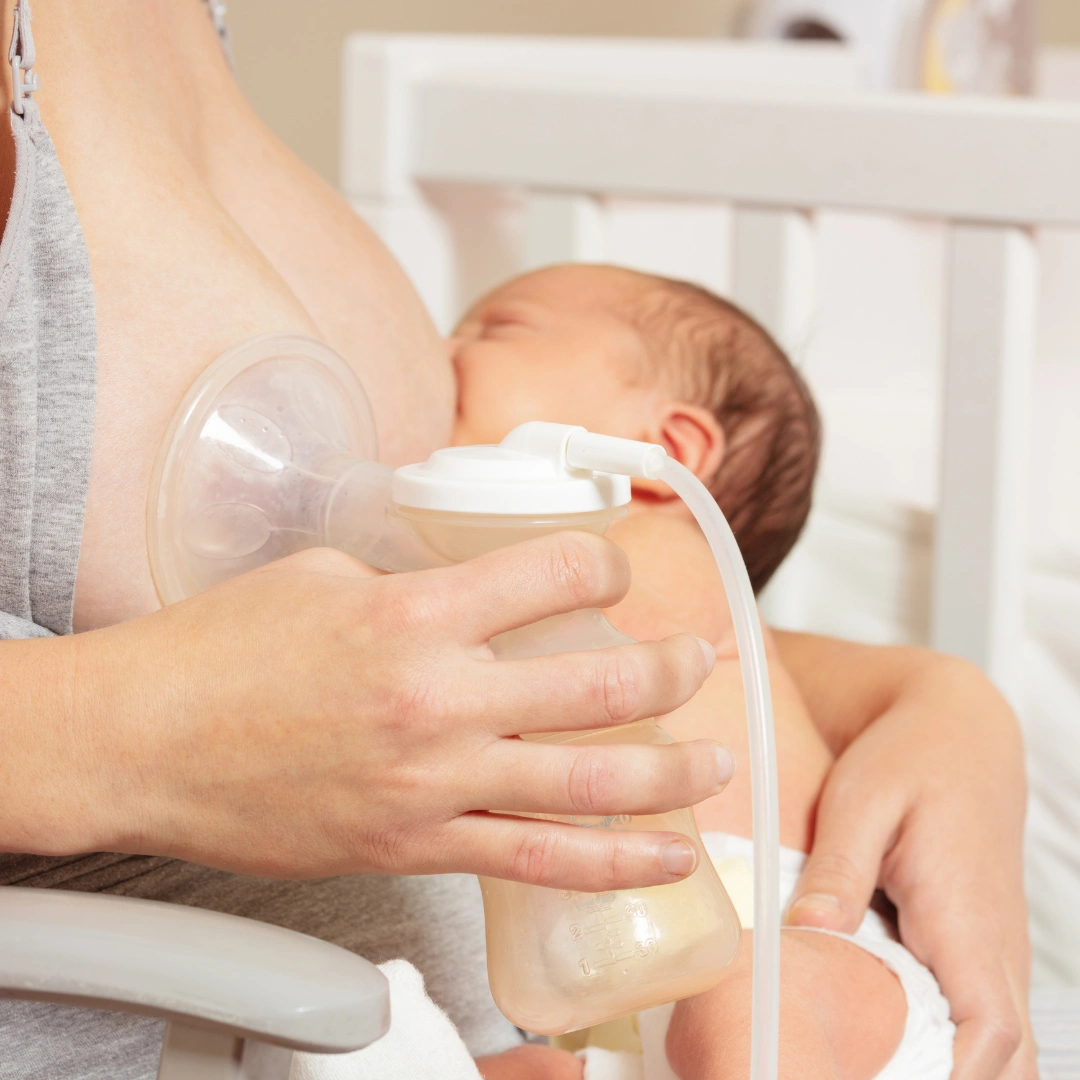
Why Would I Need a Breast Pump?
You've decided to pump exclusively
There’s no one “correct” way to nourish your little one. Exclusive pumping is a way for mothers to feed breast milk without having to actually breastfeed. This method comes with many benefits and challenges. Many moms choose this path for a variety of reasons, such as issues with breastfeeding, wanting to share feeding responsibilities, wanting to donate breast milk, or simply deciding that this is the best choice for them.
We encourage you to be open and consider all options for feeding your baby and maintain a flexible attitude. Trust yourself, listen to your body and mind, and do what’s best for both your baby and your mental & physical health.
You're returning to work
Not every mom can, or wants to, be a stay-at-home mom. However, that shouldn’t mean that you can’t continue to feed your little one breast milk throughout the day. Pumping allows you the flexibility to pump as you need to, even at work, to build up a supply for baby when you aren’t there.
You want to share feeding responsibilities

The ability to express and store breast milk grants you the freedom to address both personal and professional commitments while still feeding them breast milk. This flexibility also enables shared caregiving responsibilities, allowing partners or other trusted caregivers the opportunity to form a stronger bond with the baby through feeding.
You’re experiencing engorgement
If you’re a new mom, you might not be familiar with engorgement, which is a natural and common condition where your breasts become swollen and painful due to an overabundant milk supply. To ease the discomfort, expressing milk through pumping is highly effective. It can also be done before feeding to help your baby latch on more easily when your breasts are swollen.
GOOD TO KNOW
If you're pumping to relieve swollen breasts, avoid pumping until they are completely empty. Instead, pump just enough to alleviate the pressure. Pumping until empty can cause your breasts to fill up again and worsen the issue.
You’re having difficulty breastfeeding
While breastfeeding is a natural process, mastering it doesn’t always come effortlessly. Surprisingly, 60 to 80% of mothers encounter challenges while attempting to breastfeed, and a significant 42% even contemplate quitting within the initial 6 weeks.
If you’re grappling with the profound difficulties of breastfeeding and notice that it’s taking a toll on your mental well-being, exploring alternatives like pumping and bottle-feeding, or opting for formula, can be a supportive choice. Should you find yourself in this situation, pumping can become your ally, ensuring that your precious little one continues to receive the nourishment they require while lightening the burden on your shoulders.
You want to boost, maintain, or establish milk supply
Breast pumps are valuable tools to help boost, maintain or establish a supply, especially if you aren’t able to breastfeed. It can help to regulates the natural supply and demand mechanism of your body, while providing a backup source for times away from your baby.
Boosting milk supply is crucial when your baby’s needs increase. Breast pumps can help you fully empty your breasts during each session, which stimulates further milk production to meet feeding needs. On the other hand, maintaining milk supply becomes essential when demand decreases, like when baby isn’t feeding as much or if you and baby are temporarily apart.
Your baby is prem or ill
For preterm or sick babies, a breast pump can be a lifeline. Preemies may struggle with latching due to their early arrival or being separated in the NICU. Research shows that breast milk is not only easier to digest for these tiny fighters but also provides vital benefits. Additionally, sick babies benefit from the antibodies present in breast milk, bolstering their immune system during a vulnerable time. Pumping allows you to provide this invaluable nourishment, even if your little ones have difficulty latching due to illness or other challenges.
You want to build a milk stash
If you’re heading back to work soon, or if you want to make sure you have some extra breast milk in your freezer, then a breast pump can help you build your stash.
A breast pump will allow you to boost your supply so that you have sufficient milk to both feed and store, and, it will help you express your milk for storage.
You May Be Able to Claim From Medical Aid
Some breast pumps are registered as essential medical devices, which means you might be able to claim them through your medical aid. To find out if a breast pump is covered within your benefits, contact your scheme. We are a registered provider and can assist you with claims for breast pumps and other devices.
What to Consider
If you’ve decided that you do need or want a breast pump, then you’ll need to decide which one will be the best fit for you. Let’s unpack some things to consider when choosing a breast pump.
Manual Breast Pumps vs Electric Breast Pumps

Manual pumps require you to pump the milk, usually with a lever, while electric pumps use a motor that creates suction.
Manual breast pumps are a simple and cost-effective choice, ideal for mothers who pump infrequently or need a backup option. It’s great during emergencies or power outages, like loadshedding. Although they don’t extract as much milk as electric pumps, their portability and lightweight design make them perfect for discreet and quiet pumping on the go.
Electric breast pumps are particularly efficient at expressing milk and often allow for hands-free operation with certain accessories, making them a great option for busy moms. Many come with adjustable settings that you can tailor to your own needs for a customised and comfortable pumping experience.
Although electric pumps can be noisier and bulkier, they are a great option for moms with twins, moms looking to maintain or build their milk supply, and moms going back to work or spending extended periods of time away from their little one.
Traditional Pumps vs Wearable Pumps
Wearable pumps are hands-free, lightweight, and discreet, fitting inside your bra for day-to-day use. Without tubes or cords, they offer portability and are easy to clean and assemble due to having fewer parts.
Their main advantage is discretion, as they are quiet and comfortable for moms to use while out or at work. They allow you to care for your baby and multitask more easily, making the transition to motherhood smoother.
However, wearable pumps may sacrifice pumping power, with a maximum suction strength of around 220 mmHg compared to 300-320 mmHg in hospital-grade pumps. This could lead to incomplete breast emptying, potentially affecting milk supply over time.
Single Pumps vs Double Pumps

With a single breast pump you can only express milk from one breast at a time whereas double pumps allow you to express from both simultaneously.
Single pumps have fewer parts to clean and sterilise, making them ideal for on-the-go and budget-friendly feeding. However, pumping takes longer since you have to pump each side separately. They are a great choice if you don’t pump frequently, prefer easy setup and cleaning, or have time to pump each breast separately.
Double pumps may cost more, be larger, and need extra washing up, but they make up for it by being very efficient at pumping milk. If you’re pumping often or exclusively, a double pump is a real time-saver.
Double pumping is a game-changer when it comes to expressing milk. Studies show you can get 18% more milk when both breasts are pumped at the same time, compared to single pumping. But it’s not just about quantity; the quality gets a boost too. Your milk may have more fat and energy-rich content, making it extra nourishing for your baby. Plus, better milk drainage means you’re helping to keep your milk supply strong. All in all, double pumping is a win-win for both quantity and quality.
Rechargeable Pumps vs Mains-Powered Pumps
If you do decide to go for an electric pump, the next thing to consider would be a rechargeable pump VS a mains-powered one.
Rechargeable pumps are ideal for South African moms facing loadshedding with batteries that last about 1-3 sessions. They offer portability and convenience for on-the-go pumping, however, they can be pricier upfront. Mains powered pumps require a power outlet. This type of pump is ideal for moms who pump infrequently or have a backup power source for loadshedding.
Portability & Noise Level
When selecting a breast pump, consider both portability and noise level for an optimal experience. Portability involves finding a balance between a compact, lightweight design and the overall effectiveness of the device.
Quieter pumps offer discretion in public or near a sleeping baby and ensures a seamless pumping experience without disrupting your surroundings. Striking the right balance between portability and noise level enhances your pumping journey, offering convenience and privacy.
Suction Strength, Cycle Speed & Settings
Different pumps come with different settings and some allow more customisation than others. Opt for a pump with multiple settings to fine-tune your pumping experience for both comfort and efficiency. This customisation allows you to adapt the process to your preferences, ensuring each session is productive and comfortable.
When it comes to suction strength, while a stronger suction can boost milk output, adjustable levels are crucial to strike the right balance between productivity and comfort. Look for pumps with a let-down or stimulation phase that jumpstarts milk flow before transitioning to the expression phase, mimicking natural breastfeeding patterns.
Adaptability is also essential, as your comfort and milk supply may shift over time. Seek user-friendly pumps with memory functions for convenience, saving preferred settings and time. Some models even offer features like nightlights, timers, and apps for enhanced experiences.
Available Spare Parts & Accessories
Next, take a closer look at the accompanying accessories that come with your chosen pump. Hands-free pumping accessories stand out as a game-changer, offering you the freedom to multitask while expressing milk. Customisable breast shields are another essential component, ensuring a comfortable fit that caters to your unique body.
Over time, wear and tear might necessitate the replacement of certain parts of your pump, so we suggest checking the availability of parts for the foreseeable future. This not only extends the lifespan of your pump but also ensures that it consistently operates at its best.
Features Glossary
Dual Phase Expression or Letdown & Expression Mode
Dual Phase Expression in breast pumps simulates natural nursing patterns by initiating with a rapid cycle known as the “let-down” or “stimulation phase.” This is followed by a slower, stronger cycle, referred to as the “expression phase,” for efficient milk extraction. It aims to replicate the way a baby nurses for more comfortable and effective milk extraction.
GOOD TO KNOW
Some brands call this "two-phase expression," "dual rhythm pumping," or even "natural expression."

Hospital Grade
Hospital-grade breast pumps are high-quality, durable devices engineered for frequent and efficient milk expression. These pumps usually feature a closed system, allowing multiple mothers to use the pump safely when equipped with their own breast shields, flanges, tubes, and bottles. They are particularly well-suited for moms who are exclusively pumping or anticipate the need for regular pumping sessions.
Handsfreee Pumping
Hands-free pumping can be a game-changer. While most pumps don’t come with hands-free accessories included, you can purchase additional items like collection cups that fit into your regular bra or a special bustier that holds the flanges against your breast. These accessories allow you the freedom to multitask while pumping.
GOOD TO KNOW
Many new breast pumps are designed to be wearable, offering incredible convenience for on-the-go moms. However, it's worth noting that these wearable pumps typically don't provide the same level of suction strength as traditional pumps that come with optional handsfree attachments.
Closed system
A closed-system pump includes a barrier, often in the form of a backflow protector or membrane, that prevents air from the pump motor from coming into contact with the milk. This design ensures greater sterility and safety, making it easier to maintain a clean and hygienic pumping environment.
GOOD TO KNOW
Most electric pumps available on the market today feature a closed system, enhancing both sterility and safety for a cleaner, more hygienic pumping experience.
Vaccum or Suction Strength
Suction Strength/Levels refer to the vacuum pressure a breast pump uses to extract milk, typically measured in mmHg (millimeters of mercury). Most breast pumps have a maximum suction strength ranging from 250 to 330 mmHg.
This suction strength determines how forcefully your pump pulls. However, the ideal strength varies for everyone—what feels comfortable or tolerable for one person might not be for another. It’s important to debunk a common myth: higher suction does NOT automatically mean more milk. Comfort is far more crucial than using the highest vacuum level. Pumping at a high suction level that causes discomfort can actually lead to tension in the body and inhibit milk flow. Comfort is key!
Cycle Speed
Cycle speed on your breast pump is measured in “CPM” (Cycles Per Minute) and indicates how many times the pump will ‘suckle’ and release per minute. When a baby latches onto the breast to trigger milk letdown, they suckle more rapidly (higher CPM) to stimulate milk flow. Once the milk starts flowing, the baby slows down their sucking (lower CPM).
A higher cycle speed means your pump is moving your nipple back and forth faster within the flange, while a lower cycle speed results in slower, more extended tugs from the pump. Typically, a faster cycle speed helps stimulate the breast to trigger milk letdown, while a slower cycle speed is better for extracting the maximum amount of milk. However, preferences vary, and everyone has a different cycle speed they find most effective for milk expression.
Not all breast pumps allow you to adjust both the cycle speed and suction strength. Keep an eye out for pumps that allow you to adjust these independently, as they will give you the most flexibility in finding the right settings for you.
Memory Function
As you continue pumping, you come to find how your body responds to the pump and what settings seem to work best for you and your body. Your pump can recognize these and you can save them into this “memory mode”. Therefore, each time you turn on your pump, that’s all you have to do. Your pump will automatically switch you from phase 1 (higher number) to phase 2 (lower number) at the time your body usually initiates a letdown of milk. It also remembers what vacuum strength and cycle speeds you like for phase 1 and phase 2. This is so nice so that you don’t have to worry about pressing a bunch of buttons to switch things over— especially if you get busy with something and forget!
Timers
Some pumps have built-in timers and automatic shut-offs after approximately 20-30 minutes. These features can be incredibly helpful if you want to keep track of how long you are pumping to optimize your routine.
Auto Shut-Off
An auto shut-off feature can be incredibly helpful if you’re trying to track how long you’ve been pumping. It’s especially useful if you accidentally bump your breast pump in your bag—you won’t have to worry about draining the battery unnecessarily.
Bestselling Breast Pumps
Our Guidance Pledge
We’re dedicated to providing you with practical, evidence-based information to help you make the best choices for your growing family. All content is medically reviewed by our in-house doctor and/or experts such as OB-GYNs, doulas, and midwives, and is based on the latest international guidelines, peer-reviewed studies, and reputable sources from academic institutions and medical journals. Learn More
Sources
- Prime, D. K., Garbin, C. P., Hartmann, P. E., & Kent, J. C. (2012). Simultaneous breast expression in breastfeeding women is more efficacious than sequential breast expression. Breastfeeding medicine : the official journal of the Academy of Breastfeeding Medicine, 7(6), 442–447. https://doi.org/10.1089/bfm.2011.0139
- Anderson, J. (2024, August 3). Wearable pumps and milk supply expectations. Genuine Lactation. https://www.genuinelactation.com/blog-for-breastfeeding-families/wearable-pumps-and-milk-supply-expectations
- Sauls, J. (2008). Potential benefits of breastfeeding for mothers: A review of the literature. Journal of Neonatal Nursing, 14(6), 188-192. https://doi.org/10.1016/j.jnn.2008.07.011
